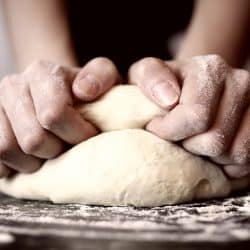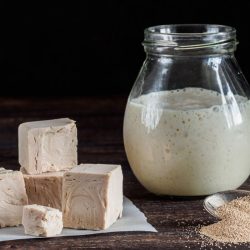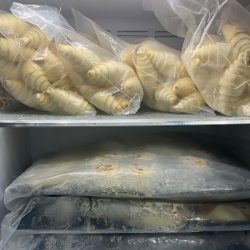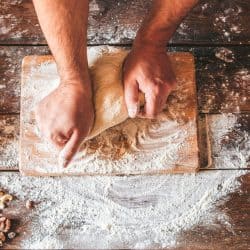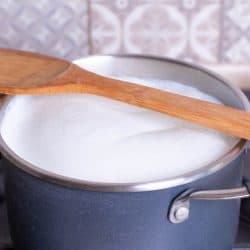There's nothing quite like sinking your teeth into a buttery, flaky croissant -it's heavenly! These delicate pastries are somewhat of an art form, but if you're making homemade croissants there is little room to err to get that ideal airy yet crisp texture and rich flavor. You might wonder if the butter should leak out of croissants during the baking process, after all, it can be quite a bit of butter used during lamination. We've closely inspected, and even tested, a variety of croissant recipes and techniques to let you know the answer.
Should croissants be leaking butter? It’s frustrating when you’ve followed the recipe exactly, and yet there is butter leaking! We’ve researched all of the possibilities and conducted some tests to give you the most comprehensive information. Read on to solve the problem of how to stop butter leaking from your croissants!
If your croissants are leaking butter, the problem is:
- They became too warm.
- The solution: Monitor the dough and room temperature during all stages of production.
- There was a fault in the lamination process.
- The solution: Do not allow butter to break through the layers of lamination.
Butter leaking from croissants is very common, even experienced bakers have this problem. It really comes down to a few issues that can be readily solved with a few adjustments. All of the problems - and the solutions - are discussed below to give you a clear understanding of what adjustments you may need to make to stop the butter leaks!
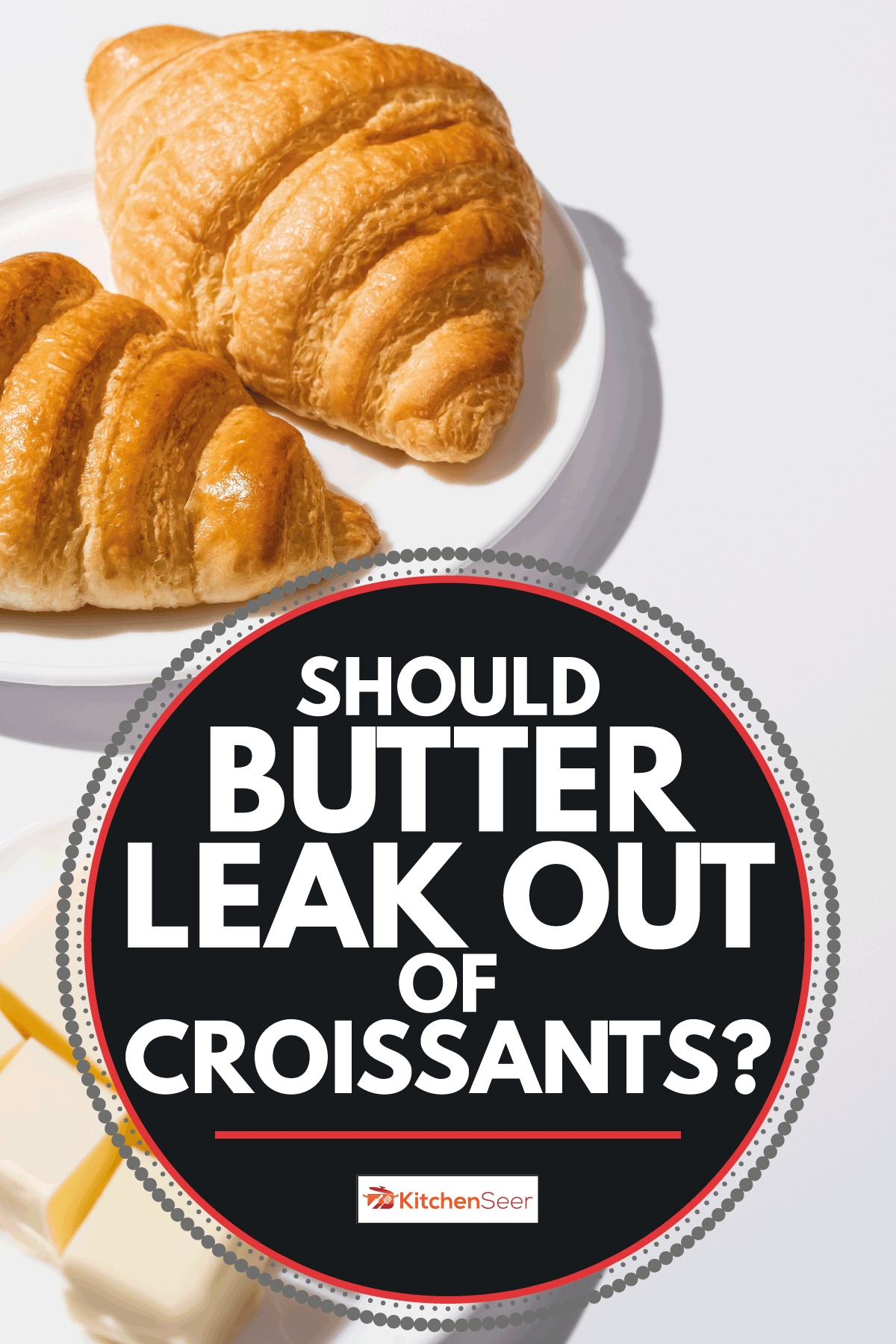
Croissants: Why your butter is leaking
Croissants are both a science and an art, as testified by the hundreds of books that have been written on how to make them. So to understand why you have butter leaking out of your croissants, it is important to understand exactly how the final croissant texture is created.
During lamination - which is the process of layering the dough with butter - you are creating many separate layers of dough and butter. Then, during proofing, tiny bubbles of carbon dioxide are formed from the yeast, which create pockets of air between the thin layers. Finally, during baking, the moisture in the croissants creates steam. This evaporates, leaving tender layers of flaky dough and butter.
1. Prevent Butter Leaks Due To Temperature
Keep your dough and butter chilled
Laminate the dough when the temperature is between 66°F and 70°F; it should be cold but pliable. Allowing the dough to become too warm will cause the butter to leak out of the croissants.
Return the dough to the refrigerator between each lamination turn. Working the dough too much will warm it and mix the dough and butter together, instead of keeping them in separate layers.
Proof the dough between 75°F and 80°F
Never allow the laminated dough to get too warm during proofing, as this will always cause butter to leak out of croissants. If you feel your dough is getting too warm, always return it to the refrigerator to cool for a few minutes during proofing. They will continue to rise, but the cold will stop the layers from melting into each other.
NOTE: The ambient humidity can also raise the temperature. It should be between 75% and 85%. If you suspect this is a problem, return the croissants to the refrigerator for several minutes to cool them down. Turning on the air conditioner can also lower the humidity.
Calibrate your oven temperature
Surprisingly, you may have butter leaking from your croissants because you are baking them at the wrong temperature. Bake the croissants at 400°F for the first 10 to 12 minutes, and then reduce the oven temperature to 375°F and bake for an additional 10 to 12 minutes.
Be sure to check that your oven temperature is accurate. Baking the croissants at a temperature that is too low will definitely cause butter leakage.
Click here to purchase an oven thermometer at Amazon.
2. Prevent Butter Leaks Due To Faulty Lamination
Do not try to force the dough into shape. Stretch the dough while rolling, rather than pressing too hard. This maintains the separate layers of dough and butter. Pressing too hard can mix the butter and dough together.
If your dough is too cold to roll, it can break the layers of lamination. Allow it to warm a bit until it is pliable again, no more than about 68°F. During each lamination, do try not to reduce the dough by more than 1/3 to 1/4 of the starting thickness. This can break the layers and cause butter to leak.
Some recipes call for the butter to be blended in a mixer or bashed with a rolling pin to make it pliable. If you do this, be sure the butter is not too warm when you begin to laminate. The texture of your dough should not be softer than the butter. If your dough is too soft, the cold butter will break through during lamination. Experiment with different types of flour and adjust your recipe if needed.
What should the inside of a croissant look like?
In this photo, you can see the tiny, separate layers of a baked croissant.
What butter is best for croissants?
The best butter for croissants is unsalted butter with a high-fat content. All of the following are excellent butter choices, with a fat percentage of 82% or more. Standard American butter is only 80% fat, so you may yield better results on croissants made with imported butter.
Plugra is a European-style butter made in the United States. Click here to see it on Amazon.
Kerry Gold is imported from Ireland. Click here to see it on Amazon.
Lurpak is imported from Denmark. Click here to see it on Amazon.
This extra 2% of fat might not seem like much, but butter with a lower fat content includes more liquid. This additional liquid can cause your croissants to steam just a little too long during baking, causing the butter to melt before the dough is cooked - and ending in butter leaking from your croissants. You might be surprised, but you can find many of these kinds of butter at your local grocery, specialty, or co-op stores.
Butter's Flavor & Quality
There is another consideration on butter regarding flavor and quality. For hundreds of years, Jersey and Guernsey cows were prized for the flavor and quality of their milk. These cows are still prized and used almost exclusively in Southern France. But since commercial milk production began, many countries began to use other breeds of cows because they could produce a higher volume of milk. The flavor of this milk is vastly inferior.
If you want to replicate the flavor of real French croissants, you can either find butter made from Jersey or Guernsey cows or make your own butter using milk from those cows. Both are usually available at specialty or co-op markets. Making butter is surprisingly simple; it only requires full-cream milk and a mixer, no churns required!
How much butter is in croissants?
Commercial croissants are only about 15% to 25% butter, while most recipes for home baking will be about 32% to 33%. French recipes online for croissants au beurre or butter croissants can have as much as 36% butter. More butter in croissants makes the croissants taste rich and decadent.
How do you know when a croissant is proofed?
When a croissant is proofed, it will have increased in size by about two-and-a-half times, and it will look puffy yet firm. It is very important to allow the dough to rise at a low temperature; otherwise, butter will leak out of your croissants at this stage. Proofing can take anywhere from one to three hours.
This photo shows croissants ready for the oven - note how firm they look. Over-proofed croissants will look deflated and dimpled - and they will leak butter during baking.
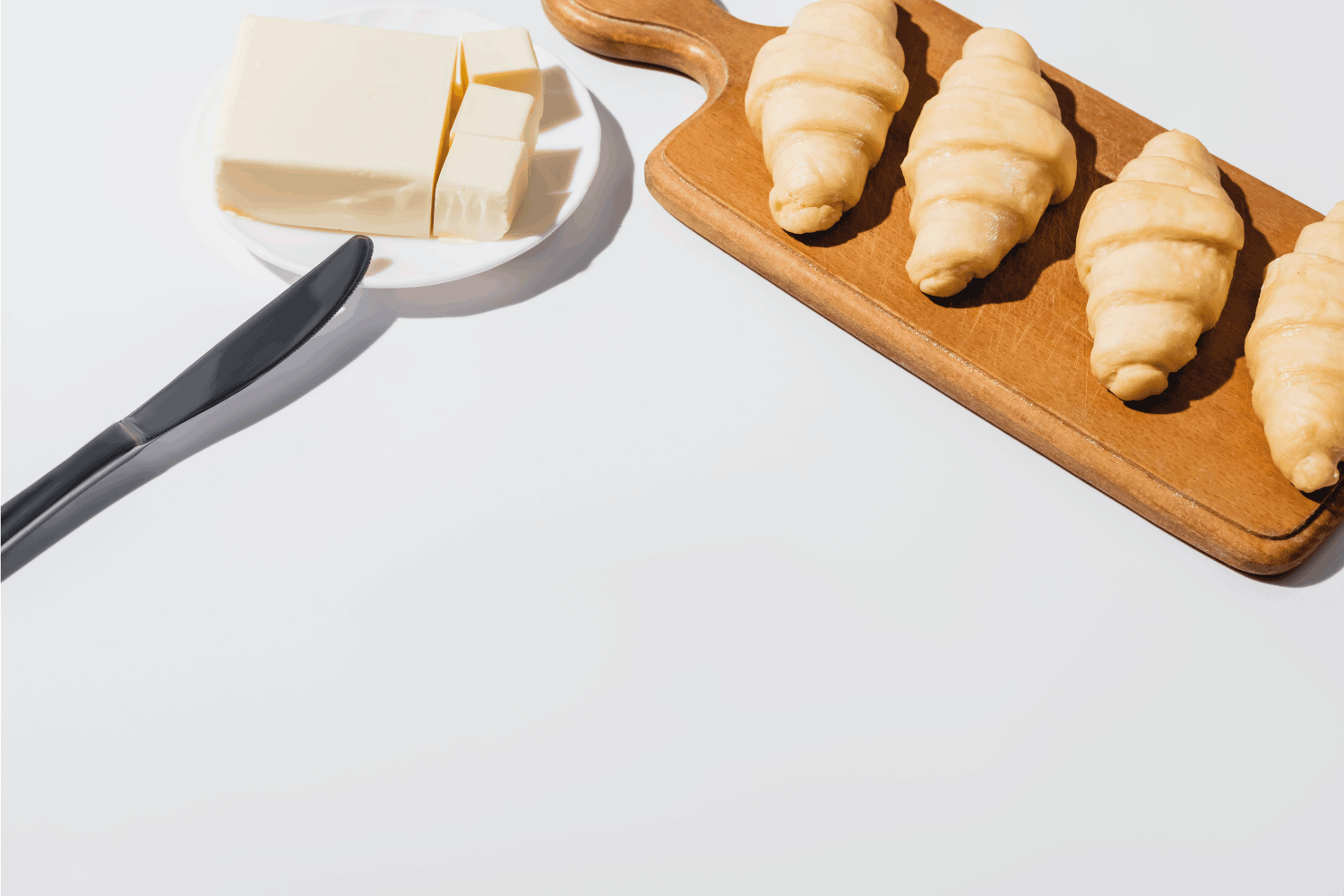
There is one other possible issue that may affect butter leaking from your croissants, although it is not as common as the above two reasons. If your croissants deflate and lose rising power before they have sufficiently risen, they can leak butter. This can happen when:
- The yeast was old or not viable. Check the date on the package and use the freshest available. Keep yeast packets in the refrigerator once they are purchased.
- You may have allowed the dough to become too warm, too often, during the process, and it lost the power of the yeast. Yeast is a bacteria, and it causes the dough to rise because it is essentially feeding on the flour in the dough. Once it has consumed all of the food, it will die before the proofing process.
- If your recipe called for proving the yeast in a bowl of warm water, you might have made the water so warm that it killed all, or some, of the yeast. Keep the water temperature between 81°F and 100°F.
In Closing
As you can see, the most important points to keep butter from leaking out of croissants are temperature and handling during all stages. If you are unable to change the temperature of your workspace, consider working in the early morning and evening hours when it is cooler. Remember to keep in mind any ambient humidity that can raise the temperature in your workspace, and include monitoring and possibly calibrating the correct temperature of the oven. Keep the layers intact by handling the dough gently and returning it to the refrigerator anytime it becomes too warm. Always buy fresh yeast, and keep it refrigerated before use. Bon appétit!
For additional knowledge about baking, read the posts;
Do Convection Ovens Cook And Bake Faster? [Including Typical Cooking Times For Common Dishes]





